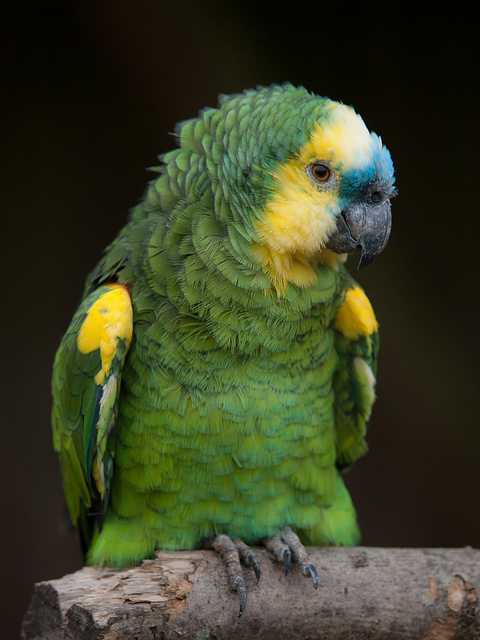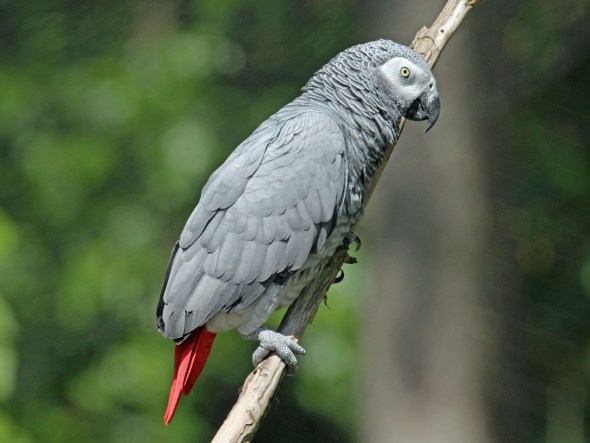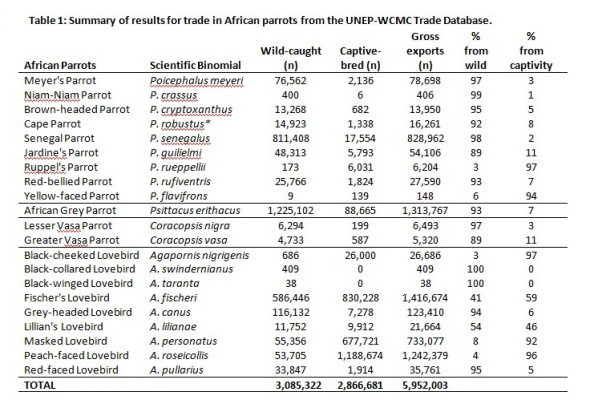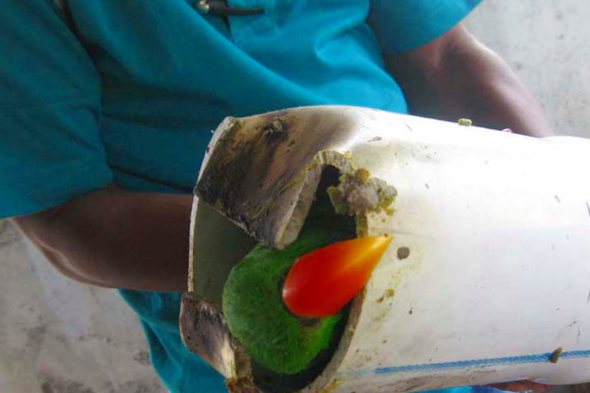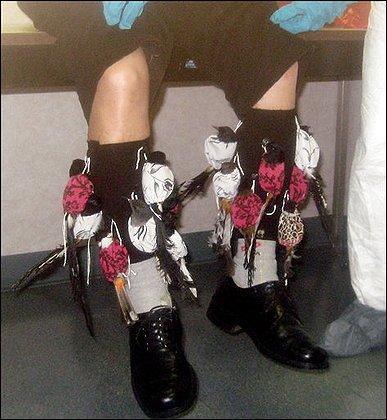The Bird, The Cage & The Choice by Pooja Gupta.
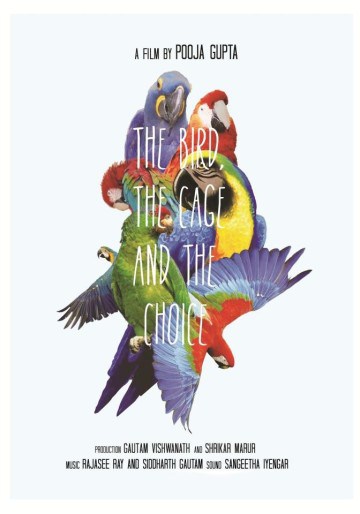
An Indian wildlife production by Pooja Gupta.
The Bird the Cage and the Choice is a small documentary that’s directed by Pooja Gupta an Indian photographer and small amateur film maker that’s documented the avian bird trade both domestic and commercially. Pooja describes in detail here thoughts on the trade and whether it’s an ethical choice now to keep birds confined to cages plus abducting them from the wild then breeding them for sale.
The avian bird trade is a serious problem within the animal smuggling and parts trade of which many avian endangered species are take from the wild of Asian and African forests then transported in the most inhumane conditions, there have been custom seizures in the European Union, Asia and America of birds stuffed in socks within suitcase compartment’s to even transported in “parcels” with no food or water of which mostly when found by investigating custom and excise officers the birds have sadly passed away.
Tropical birds are being captured from the rainforests in order to sell as pets. These birds are very beautiful and colorful, as well as intelligent, and people want to keep them as pets. Without birds in the rainforests, there can be no pollination of plants or spreading of seeds, meaning the end of plant species that rely on certain types of birds. Through evolution the beaks of birds have adapted to be able to get into the various shapes of different plants. If these birds then disappear, plants will not survive. Migratory birds and the survival of birds and animals already living in the rainforests will also be threatened.
Tropical birds are very desirable as pets and people will spend a lot of money to purchase them. Common tropical birds sell for $1,000, but the rarer birds can sell for as much as $10,000 in the US. These birds come from rainforests around the world—in Africa, Central and South America, Australia and Asia. Most of these areas are in regions that are very poor. The poor local people of these areas can make money by capturing and selling these birds to dealers because it is a multi-billion dollar industry.
Last year 2012, a giant black market bust left 4,000 people arrested and over twice that number of animals rescued. There was no hiding for these criminals, as officials were determined to save the tropical birds and put an end to their illegal trade. Many of these trafficked species are endangered, so this raid left animal advocates hopeful for the restoration of exotic European birds.
More than 8,700 birds and other animals have been seized and nearly 4,000 people arrested in a 2012 global crackdown on the black market trade in Latin American birds, according to INTERPOL. “Operation Cage” targeted illegal bird and egg sales in Central and South America and Europe.
Between April and June of 2012, authorities seized not only thousands of live birds, but turtles, fish, mammals, and elephant ivory. The raids and arrests took place at ports, airports, open-air markets, pet stores, and taxidermy shops. Along with the birds and other animals, authorities seized trapping equipment, guns, and ammunition too.
Operation Cage was launched in response to the growing illegal trans-border trade of captive-bred and wild birds and eggs, and the increasing involvement of organized crime networks in their transit from Latin America to Europe.
The global black market for exotic birds is a multi-billion-dollar business that has had a big impact on bird populations in Central and South America. According to the International Union for the Conservation of Nature (IUCN), roughly 100 of the world’s 350 parrot species are now threatened with extinction by illegal seizure for trade and habitat loss.
“Operation Cage once again clearly demonstrates the global scale of the problem of the illegal trade in birds and other wildlife, which is not just an organized crime issue, but also represents a bio-security risk,” said David Higgins, manager of INTERPOL’s Environmental Crime Programme. Birds raised in captivity and sold on the black market often carry diseases that can pose a threat to other birds, and people such as the recent Avian flue virus that resulted in millions of birds slaughtered due to human negligence.
“The criminals involved in this illicit trade have no concern for the welfare of these birds and animals, [or] that many of the species being trafficked are endangered. The only concern they have is [for] the profits they can make,” Higgins said.
“The capture and illicit trade of birds has particularly impacted threatened birds because their rarity yields higher demand and higher black market prices for the trappers and traders. In addition to the impact of collecting on wild populations, the illegal trade causes tremendous suffering to individual birds, with many dying during transportation,” said Dr. George Fenwick, President of American Bird Conservancy, the only organization exclusively conserving birds throughout the Americas.
Supported by the United Kingdom Department for Environment, Food, and Rural Affairs, and Environment Canada, Operation Cage was coordinated by INTERPOL’s Environmental Crime Programme unit at the General Secretariat headquarters in Lyon. Thirty-two countries participated, including: Argentina, Austria, Azerbaijan, Belgium, Brazil, Bulgaria, Colombia, Cyprus, Czech Republic, El Salvador, Finland, France, Germany, Guatemala, Guyana, Honduras, Hungary, Italy, Mexico, Netherlands, Nicaragua, Paraguay, Portugal, Russia, Serbia, Spain, Switzerland, Trinidad and Tobago, Turkey, United Kingdom, Uruguay, Venezuela.
The illegal wildlife trade is big business and as described in the film the trade of endangered species to high quality specimens is not in the smuggler and distributors eyes “simply trading in pets”. The whole trade supports illegal fire arms sales, narcotics to terrorism You may believe that your pet has come direct from a pet store of which most of the pet shop owners are neither trained nor experienced in this area, however in reality has you pet’s “descendants” been brought into the country illegally then kept in the most appalling inhumane conditions to then be sold to pet shops internationally illegitimately. As Pooja Gupta explains in her twelve minute well documented short Indian production film it’s left to the final purchaser to then make their minds up of whether their tropical bird, have derived from a sincere background.
The documentary above depicts the illegal wildlife trade filmed by the Humane Society of the United States of America, it clearly but emotionally shows the deceitfulness manner in which birds are smuggled over the border in bags to boxes then sold openly on the markets to streets to traders or opportunistic breeders and dealers that than sell on their young to you of which your none the wiser.
One can never be sure that the bird you have purchased unless your an expert in avian species is endangered or has been smuggled within the nation you live in, to sold to a legitimate pet store. So the “CHOICE” is then really down to you on whether you wish to fuel the trade, which in turn your monetary funds then go to criminals to fund civil wars and narcotics, by purchasing in shops and mills your monies simply go into feeding the trade more.
The seizure below last year 2012 December was one of the most craved after birds within the tropical “pet trade” and that is the Amazon Parrot. The birds where sized in the most repulsive conditions of which you can clearly see by there heads bobbing up and down and dryness of feathers that they where still suffering shock. Destined for the high market they would of been sold for approximately $900 to $1000 dollars singly or double this price to breeders that then carry on feeding the chain which sell on to pet stores that the owners are none the wiser of.
The picture above is of the healthy Blue Front Amazon Parrot that can mimic humans very easily and adapt to captivity very easily, like ourselves the International Animal Rescue Foundation and Pooja Gupta we are very aware the boundaries of captivity are severely being exploited of which action needs to be taken now.
The African Grey pictured below is another species listed in the red watch list of the International Union for Conservation of Nature as Vulnerable BUT can you tell the diffidence between the African Grey and the Timneh grey? both are similar species that look exactly the same, and have both the same behavioral characteristics, they are also very desired on the black market that can sell from the $1,000 to $5,000 depending on how well the particular species of bird has been reared.
Above is the true African Grey which can be identified easily by it’s red rear tail plumage however the African Timneh also has the same colored plumage although as little more darker, are you sure that your “True African Grey” a vulnerable protected species is not that of the Timneh, or vice versa.
As Pooja Gupta has explained the choice is your’s when purchasing. Fighting the illegal trade through awareness and support will eventually close the traders down via lack of funding or does one make the choice to cage the bird and allow it to live it’s life as a clipped wing bird living in solitary confinement without it’s natural habitat and siblings surrounding them how Mother Nature intended.
According to the most conservative estimates, over three million African parrots have been snatched from the wild over the last 25–30 years. As can be seen in Table 1 (above) there are, several species, such as the African Grey Parrot, have been almost exclusively sourced from the wild over the last few decades. Immense and insatiable demands from China, Taiwan, Singapore and other parts of Southeast Asia are driving international trade in African parrots.
The picture above shows smuggler wearing a very crude crafted vest that has within it small slits that one parrot egg is then placed within. This is a well known way of smuggling and also one that keeps the eggs close to body temperature thus reducing deaths, sadly though it’s not as easy as said. The eggs can hatch to even being broken through smuggling, The total cost of this seizure would of reached over $10-15,000 on the black market that the consumer “you” then purchase without realising where your parrots or any animal within the pet trade has derived from. The eggs above would of been used to breed then the young sold on.
Picture above and below is grossly inhumane which the bird would of suffered dearly for hours stuffed inside construction pipes and taped to the smugglers legs. Unfortunately these are the lengths that poachers will go to. Most are transported via eggs in the most highly sophisticated manners that are similar to to that of narcotics smuggling, of which the birds are doped or have their bodies and beaks wrapped up which breaks important bones in the wings and bodies thus killing if prolonging agonising abuse for hours until death.
Smugglers will mostly bring in endangered species of parrots through through the airports of shipping ports as they are incredibly difficult to detect whilst the egg is in “the first stages of growth”. Professional poacher’s and smugglers use just the same techniques as opportunist traffickers that fuel the ivory and Rhinoceros horn Traditional Chinese Medicine market trade. Picture above second down is that of an Indian smuggler caught before he could leave to embark on his travels to Vietnam.
To cease the trade you have to hit the demand, and once this is hit then scenes such as this above will eventually end but as Pooja Gupta has explained the choice is down to you to end this trade. Carry on funding it and these scenes will regrettably be the norm which in turn will see endangered and critically endangered species of tropical birds pushed to extinction.
I now leave you with the talented young media and photographic artist Pooja Gupta, she has just completed her final thesis of which she shows and highlights “her” thoughts on the tropical pet trade. Pooja wants you to make your mind up on whether it is an ethical choice to make in purchasing thus feeding the illegal and “so called legal” pet trade involving tropical bird’s.
Pooja Gupta’s own word’s on the film are described below. Please note that all rights are reserved to Pooja and no unauthorised distribution or copying is permitted without the prior consent of Pooja Gupta the film producer. All pictures “marked” with Pooja Gupta’s name are copyright and owned to Pooja the photographer and video director.
A film by Pooja Gupta
Many people fancy having birds within their home today. But what are the consequences of doing so? The Bird, The Cage and the Choice is a film that highlights the concerns of captive breeding of birds through the views and practices of a passionate bird fancier.
The film portrays my journey of finding various perspectives into the issue of captive breeding through the opinions of a bird fancier, a captive breeder and a bird watcher while leaving the audience to their own choice.
A film by Pooja Gupta
You can contact me for more information at [email protected]
All rights to the film and photography are owned by myself Pooja Gupta and no unlawful distribution and/or copying to transmission is permitted without strict permission of myself Pooja Gupta. All rights of use by Pooja have been given to International Animal Rescue Foundation for more information on displaying your own projects on our pages you can contact us at;
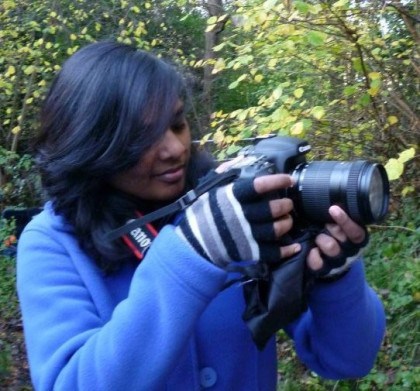
Please view my film channel on YouTube by clicking on my Photo
Hi my name is Pooja Gupta and this my short documentary wildlife filming on the trade of tropical pets and whether the choice of purchasing them to the keeping tropical birds in cages is ethical. The decision is your’s.
For more information contact me here [email protected] or you can leave me a reply via the site at this address the International Animal Rescue Foundation of which all emails are forwarded on to myself;
http://www.international-animalrescue-foundation.org.uk/the-bird-the-cage-the-choice/

